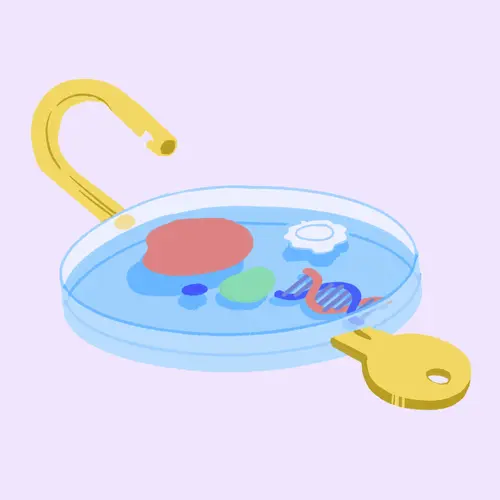Mixed Connective Tissue Disease (MCTD) is a rare autoimmune disorder. In an autoimmune disorder, your immune system, which does the job of fighting disease in your body, mistakenly attacks healthy cells. MCTD is most commonly seen in women under 30 years of age, although it can affect people of any age. Here’s what you need to know about the condition, causes, symptoms, diagnosis, treatment, and outlook.
What Is Mixed Connective Tissue Disease (MCTD)?
Mixed Connective Tissue Disease (MCTD) is an autoimmune disorder that shows the features of three different connective tissue disease types:
- Systemic Lupus Erythematosus (SLE). Systemic Lupus Erythematosus (SLE) is an autoimmune disease that can cause inflammation and tissue damage. It may spread across large areas of the affected organs. The most common symptoms include fatigue or tiredness, fever, skin rashes, joint pain or swelling.
- Scleroderma. Scleroderma is an autoimmune disease that affects normal tissue both on the skin and inside the body. The tissue becomes hard, thick, and fibrous. Serious forms of scleroderma can be life-threatening.
- Polymyositis. Polymyositis is a rare condition where muscles on both sides of your body become weak and inflamed.
MCTD can also be seen in some people who have rheumatoid arthritis. Rheumatoid arthritis is another autoimmune disease that causes inflammation in your joints.
Some people with MCTD can develop an additional connective tissue disease later on. This disease is also called an ‘overlap syndrome.’
What Causes Mixed Connective Tissue Disease?
The exact cause of Mixed Connective Tissue Disease is not known. Research is unclear about whether you can inherit the condition directly. People who do have a family history of MCTD are more likely to develop it.
Sometimes the disease can be caused by viruses. It can also be caused by exposure to chemicals like polyvinyl chloride and silica.
What Are the Symptoms of Mixed Connective Tissue Disease?
MCTD symptoms may not all show up at the same time. They can appear over several years. Early-stage symptoms may be seen in your hands, where fingers turn puffy and fingertips turn white when it gets cold. Symptoms can vary from person to person. If you have MCTD:
- You may experience pain or inflammation in your joints, muscle weakness, fever, and fatigue or tiredness.
- Your hands can become puffy and swollen because of fluid buildup.
- You may see skin rashes, red-colored patches on your knuckles, and violet coloring of your eyelids.
- There may be hair loss.
- You may develop a condition called periungual telangiectasia where the small blood vessels around your fingernails get dilated (become widened).
- Abnormalities in your esophagus (the tube that carries food and drink from your mouth to your stomach) can cause a medical condition called hypomotility. The contractions that move food down the esophagus are irregular or absent.
- Abnormalities in your lungs can cause a medical condition called pulmonary hypertension (high blood pressure in the arteries that carry blood from your heart to your lungs).
- Heart conditions such as pericarditis, myocarditis, and aortic insufficiency can develop.
- Kidney disease is also another sign that can show up.
- You may be among the 30% to 40% of people who get blood disorders like anemia (not enough red blood cells) and leukopenia (not enough white blood cells).
- There is a roughly 10% chance of developing neurological abnormalities.
- Your lymph nodes, spleen, and liver may become enlarged. Sometimes the intestines are also affected.
How is Mixed Connective Tissue Disease Diagnosed?
It can take several years to diagnose MCTD accurately because the symptoms don't appear at the same time. A diagnosis starts with a physical exam where your doctor looks for typical signs and symptoms. A blood test is also done to check for high levels of a specific antibody that has been linked to MCTD.
What Is the Treatment for Mixed Connective Tissue Disease?
There is no known cure for the condition, but MCTD treatments can help manage its signs and symptoms.
MCTD is the result of a combination of connective tissue diseases. The treatment can vary depending on the type of connective tissue diseases you have, how severe they are, and how quickly the condition advances. Doctors will usually prescribe different types of medication.
People with a mild form of MCTD may need only low doses of non-steroidal inflammatory drugs. These medicines help relieve pain and inflammation. Anti-malarial drugs or low-dose corticosteroids may also be prescribed for mild forms of MCTD.
For moderate or severe forms of MCTD, your doctor may prescribe higher doses of corticosteroids. If your organs have been affected, your doctor might recommend immunosuppressants.
Medications may be given to treat a condition called pulmonary hypertension, which is the most common cause of death in people with MCTD. You may be given medication and asked to take precautions to treat or prevent Raynaud’s phenomenon (decreased blood flow to your fingers).
People who have MCTD may find it easier to deal with the condition by seeking the help of mental health professionals, nutritionists, and support groups. With proper care and treatment, 80% of people with MCTD can live at least 10 years after the diagnosis of the condition.

